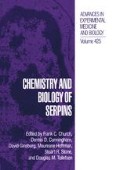Abstract
Pigment epithelium-derived factor (PEDF) is a member of the serpin family with neurotrophic activity. However, PEDF belongs to the non-inhibitory subgroup of serpins and its neurotrophic activity does not require inhibition of proteases. PEDF induces neuronal survival on cerebellar granule cell neurons and neurite-outgrowth on retinoblastoma cells. These PEDF-induced neurotrophic activities are blocked by antiserum specific for PEDF, Ab-rPEDF. In order to identify a binding activity for PEDF we have studied the interactions of PEDF to retinoblastoma cell surfaces. Binding activity was determined in retinoblastoma cells treated as for the biological neurite outgrowth assay. Retinoblastoma Y-79 cell cultures were grown in suspension at 1.25 × 105 cell per ml of medium without serum. Radiolabelled I125-PEDF was added to the suspension cultures and incubated at 4°C for 60 min. Free ligand was separated from bound PEDF by filtration through glass fibre filters under vacuum. Increasing amounts of unlabelled PEDF were used to compete with labelled proteins. Saturation binding curves indicated that PEDF-binding to retinoblastoma cells reaches a plateau at 15nM PEDF with a linear relationship up to 10nM PEDF. We have used antiserum Ab-rPEDF and ovalbumin to compete for the I125-PEDF binding to retinoblastoma cells. PEDF binding in the presence of Ab-rPEDF, excess of cold PEDF (15 nM) or ovalbumin (15 nM) was 30%, 28% and 90%, respectively, of the assays without these competitors.
Access this chapter
Tax calculation will be finalised at checkout
Purchases are for personal use only
Preview
Unable to display preview. Download preview PDF.
References
Reference
. Upton, C., J. L. Macen, D. S. Wishart, and G. McFadden. 1990. Myxoma virus and malignant rabbit fibroma virus encode a serpin-like protein important for virus virulence. Virology. 179: 618–631.
. Macen, J. L., C. Upton, N. Nation, and G. McFadden. 1993. SERP 1, a serine proteinase inhibitor encoded by myxoma virus, is a secreted glycoprotein that interferes with inflammation. Virology. 195: 348–63.
. Lucas, A., L. Liu, J. L. Macen, P. D. Nash, E. Dai, M. Stewart, W. Yan, K. Graham, W. Etches, L. Boshkov, P. N. Nation, D. Humen, M. Hobman, and G. McFadden. 1996. A virus-encoded serine proteinase inhibitor, SERP-1, inhibits atherosclerotic plaque development following balloon angioplasty. Circulation (in press).
Coughlin P, Sun J, Cerruti L, Salem H and Bird P. (1993). Cloning and molecular characterization of a novel human intracellular serine proteinase inhibitor. Proc. Natl. Acad. Sci. (USA) 90, 9417–9421.
Reference
. Sun J, Rose J and Bird P (1995). Gene structure, chromosomal localization, and expression of the murine homologue of human proteinase inhibitor 6 (PI-6) suggests divergence of PI-6 from the ovalbumin serpins. J. Biol. Chem. 270, 16089–16096.
. Scott FL, Coughlin P, Bird C, Cerruti L, Hayman JA and Bird P (1996). Proteinase inhibitor 6 cannot be secreted, which suggests it is a new type of cellular serpin. J. Biol. Chem. in press.
Author information
Authors and Affiliations
Editor information
Editors and Affiliations
Rights and permissions
Copyright information
© 1997 Springer Science+Business Media New York
About this chapter
Cite this chapter
Alberdi, E., Becerra, S.P. (1997). Inflammation and Noninhibitor Serpins. In: Church, F.C., Cunningham, D.D., Ginsburg, D., Hoffman, M., Stone, S.R., Tollefsen, D.M. (eds) Chemistry and Biology of Serpins. Advances in Experimental Medicine and Biology, vol 425. Springer, Boston, MA. https://doi.org/10.1007/978-1-4615-5391-5_25
Download citation
DOI: https://doi.org/10.1007/978-1-4615-5391-5_25
Publisher Name: Springer, Boston, MA
Print ISBN: 978-1-4613-7461-9
Online ISBN: 978-1-4615-5391-5
eBook Packages: Springer Book Archive

